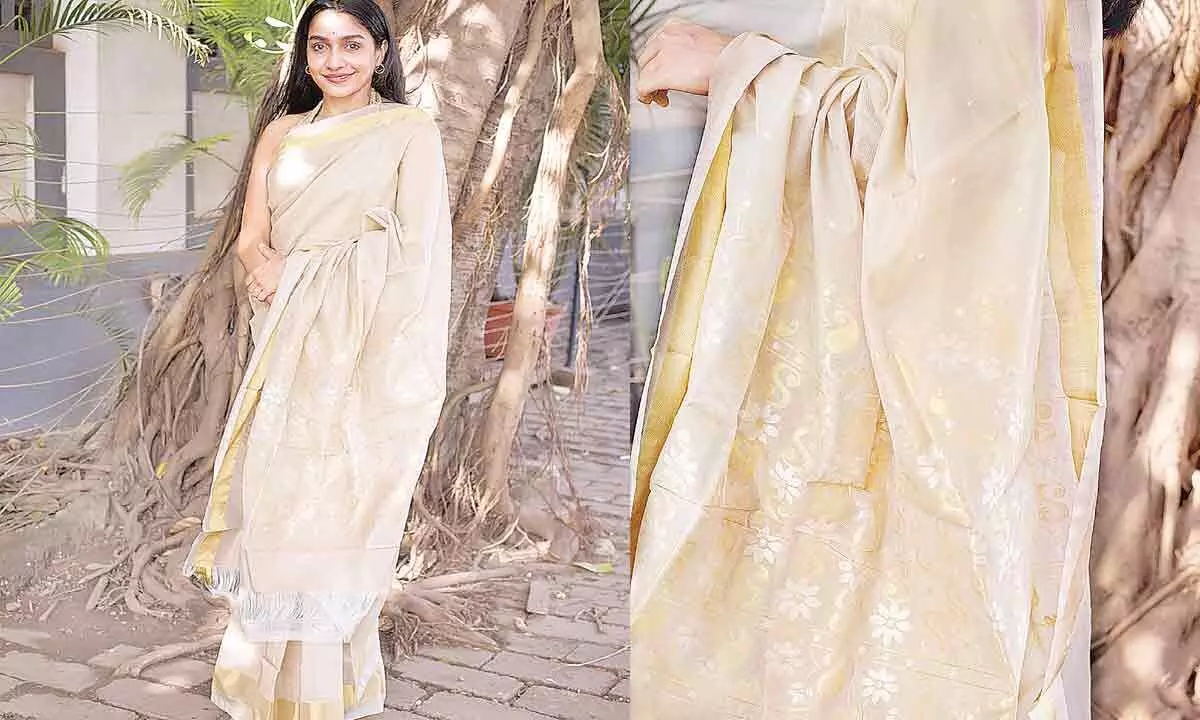Weaving along its waves: Uppada's story

If you have watched the blockbuster movie Uppena, you may be familiar with the breathtakingly beautiful and romantic seacoast of Uppada.
If you have watched the blockbuster movie Uppena, you may be familiar with the breathtakingly beautiful and romantic seacoast of Uppada. But if you haven't, find yourself a moment of silence to imagine the glorious vignettes of Uppada's seacoast entrenched in the breezy beaches of the sea bordered hamlet, for, the real love story lies there. There is, undoubtedly, an inextricable knot that binds the eternally romantic native weavers and the magical looms of weaves – a marriage of the threads, by the threads and for the threads.
And this story, along with its magnificence, finds a dear place in the hearts of all aesthetically inclined and sarees-doting women the world over.
Located in the beautiful beach town in the East Godavari district of Andhra Pradesh, Uppada rose to fame with its lightweight silk Jamdani sareess. Given the constantly changing market trends, there is a shift from fine count cotton sareess to silk ones – a trend commonly shared across all Indian handloom clusters. Similarly, Uppada too changed the track and picked up the silk threads in the last three decades.
Initially, Uppada sareess were simple cotton sareess characterised by motifs and borders. One may find it difficult to trace the exact time that Jamndani entered the scene, but as we know, it did. Soon, it also became one of the very few Jamdani clusters in the whole country. In the early 20th century, as the legend goes, three native weavers went all the way to Bangladesh to pick up this technique and bring home its glory! Thanks to those weavers and the continued efforts of others that took up the mission of Uppada, in 2009, Uppada sarees weaves even received the Geographical Indication (GI) tag.
While it is a known fact that the royals and aristocrats patronized muslins considering the quintessential sultry climate of a seacoast, even the locals preferred muslin sareess – contrary to those that lived in landlocked states, like the Northern Indians. Such was the need and craze for the weave!
The simplicity of an Uppada can be deceiving, in that it takes a lot to create one. Jamdani is woven using an extra weft without the help of dobby or jacquard machines. While two people are required to weave a sarees, it takes at least a week to weave a simple one; and a complicated design may take months altogether. And this weave is so impeccably intricate that it is challenging even for the experts to discern between the front/right and the back of the saree. Notwithstanding the fact that most Jamdani sareess today are woven in silk, thankfully, a few weavers are helping revive the tradition of Uppada's fine cotton. The rising demand for Uppada sareess has grown to such an extent that it is weighing heavily on the tiny cluster – a problem of plenty if you will. This though, in effect, only garnered more participation from the neighbouring villages – which means, more Uppada sareess!
The weavers have proven beyond doubt that they have a good grasp of the rapidly changing trends – with ever-changing, yet timeless motifs. But the all-over jaals and traditional motifs such as teardrops and mangoes continue to be the head-turners. Even better, the weavers are also walking an extra mile by initiating quirky designs to keep the palette of young sarees-lovers alive and kicking! With vibrant, stimulating and a variety of colours, replete with both bright and pastel shades – Jamdani is a favourite across generations.
What about variety? Uppada sareess can be both plain and quirky. The plain ones stripped of their motifs, with only the traditional kaddi borders, are for the common folk, whereas the unique ones that are decked with exquisite weaves are meant for the premium crowd. The former, are understandably priced lower and the latter could be as expensive as one lakh rupees too! Yet both, are priceless.
So, fret not about which version of Uppada you can afford today, for as long as you use this knowledge to invest in one great weave (instead of spending on three power-loom polyester sareess). Unsubscribe from the generation that fusses about the difficulty in draping a saree and subscribe to one that rewards the weavers for their sleepless nights. For your next big event, swear to wear an Uppada, will you?
(The writer is a handloom and handicraft enthusiast. She is also a member of crafts council. Instagram handle: Rajeswariramachander)

